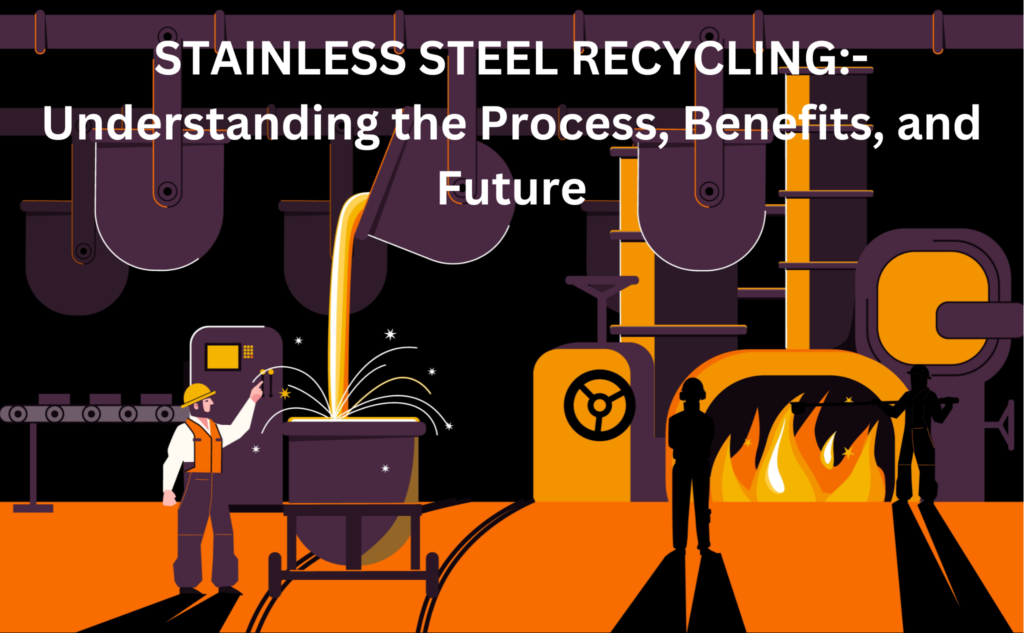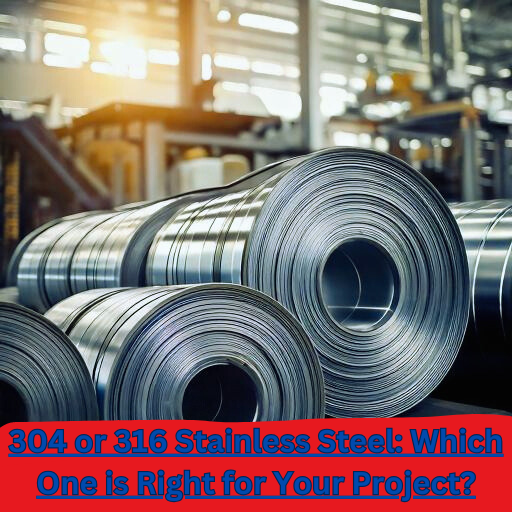Stainless steel is an alloy steel that is available in many grades and is the most durable and versatile material. Stainless steel is known for its corrosion resistance and strength. One of its unique properties is that it is 100% recyclable, which is very beneficial for the environment. Stainless steel recycling not only saves energy but also reduces carbon footprints considerably. Now we will know in detail how stainless steel recycling is and why it is important.
Importance of Stainless Steel Recycling
Producing stainless steel is an energy intensive process and the raw materials used to produce it are iron ore, chromium and nickel. These materials are used on very extensive scales. The biggest advantage of stainless steel recycling is that these raw materials can be reused. This greatly reduces the need for mining and extraction. This process is a great way to save natural resources and also reduces the pressure on the environment by some scale.
There is no difference in the quality and properties of stainless steel recycled material and original material. Through this process the same material can be recycled repeatedly without compromising on quality. This is why stainless steel is called infinitely recyclable material.
Stainless Steel Recycling Process
Stainless steel recycling is a systematic and efficient process, let’s see the step-by-step procedure:

- Collection: The first step in the stainless steel recycling process is the collection of stainless steel scrap. Scrap comes from different sources, such as old household appliances, industrial machinery, and construction materials. Collection is done from specialized networks and scrap yards. Efficient collection process ensures that maximum scrap can be processed for recycling.
- Sorting: After collection, the scrap is sorted manually and using advanced technology. In the sorting process, stainless steel is separated from other metals and materials. Accurate sorting improves both the efficiency of recycling and the quality of the end product. Advanced techniques such as magnetic separation and X-ray fluorescence help in this.
- Shredding: Scrap is shredded into small pieces. The main aim of this process is to make the scrap easy-to-handle and suitable for melting in furnaces. After shredding the surface area of the material is increased, which makes the melting process fast and energy-efficient.
- Melting: Shredded stainless steel is melted in high-temperature furnaces. These furnaces are specially designed to minimize energy consumption and ensure uniform melting. In the melting process the impurities are separated and the material is ready for refining.
- Refining: The melted material is refined so that the impurities are completely removed. The refining process is critical to maintaining the quality and properties of the stainless steel. At this stage, alloying elements such as chromium and nickel are adjusted to ensure the desired specifications of the end product.
- Recasting: Refined stainless steel is recast into different forms, such as sheets, rods, and coils. These forms are produced for industrial and consumer applications. The recasting process maintains the versatility of stainless steel and prepares it for use in new products.
Benefits of Recycling Stainless Steel
Energy Conservation: Stainless steel recycling is very energy-efficient compared to traditional production methods. Up to 60-70% of energy is saved in the recycling process due to reduced mining and raw material processing requirements. These energy savings reduce global energy demand and promote environmental sustainability.
Waste Reduction: Recycling provides an effective solution for waste management. Stainless steel scrap is reused instead of going to landfill, which significantly reduces waste generation. This approach conserves landfill space and reduces pollution levels.
Cost Efficiency: The production cost of recycled stainless steel is lower than that of virgin stainless steel. The raw material and energy savings in the recycling process directly impact the production cost. This provides economical solutions to industries and products prices are competitive.
Environmental Impact: Recycling leads to significant reduction in greenhouse gas emissions. Virgin stainless steel
Challenges in Stainless Steel Recycling
Although the stainless steel recycling process is quite efficient, it does pose some challenges:
Sorting Complexity: It is difficult to accurately sort different grades of stainless steel as the scrap often contains other materials, complicating the process.
Contamination: The presence of impurities in the scrap can make the refining process complicated and costly. Without accurate sorting and refining, the quality of the end product is impacted.
The Role of Recycling in Sustainable Development
Stainless steel recycling significantly supports sustainable development goals (SDGs), such as responsible production and consumption, climate action, and environmental protection. Recycling reduces material waste and the need for virgin materials, which aligns with circular economy principles.
Many industries, such as automotive, construction, and manufacturing, depend on recycled stainless steel to meet their sustainability targets. Recycled materials reduce the industry’s environmental footprint and also help meet regulatory requirements for ecofriendly operations.
Future of Stainless Steel Recycling
The future of stainless steel recycling is bright and new advanced technologies are being introduced every day, such as the use of Artificial Intelligence (AI), robotics, and sensor-based sorting systems, which are making the recycling process more accurate and efficient. With AI and robotics, different grades of stainless steel can be easily identified and sorted, which minimizes contamination and quality issues.
Many governments and international organizations are implementing strict regulation and policies to promote stainless steel recycling. There is pressure on industries to adopt sustainable and eco-friendly practices to support the concept of circular economy. These policies are encouraging industries to invest in stainless steel recycling and develop innovative techniques.
With all these developments, stainless steel recycling has the potential to become a sustainable and efficient model that is critical for environmental protection and resource conservation. In the times to come, with technological innovations and policy support, stainless steel recycling is likely to become even more impactful and widespread.
With the development of technology and awareness, the scope of stainless steel recycling is expanding further. Advanced sorting technologies, like AI and robotics, are making this process more efficient. At the same time, governments and industries are adopting sustainable practices, which further highlights the importance of recycling.
Conclusion
Stainless steel recycling is vital for global sustainability. Its infinite recyclability and ability to retain original properties reduces impact on the environment, saves resources and provides economic benefits. As industries and consumers begin to give preference to ecofriendly practices, the demand for recycled stainless steel is likely to increase, making it a cornerstone of the future of steel production and industrial sustainability.




Pingback: Screw types
Pingback: STAINLESS STEEL FLAT AND ROUND BAR:- GRADE WISE APPLICTIONS